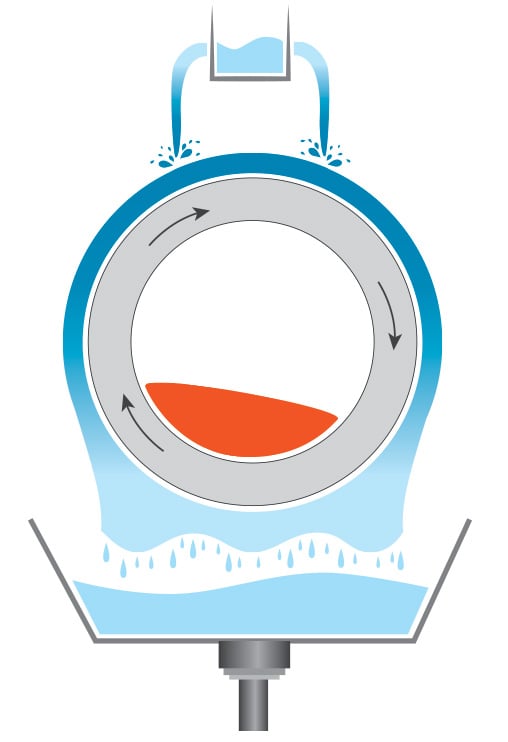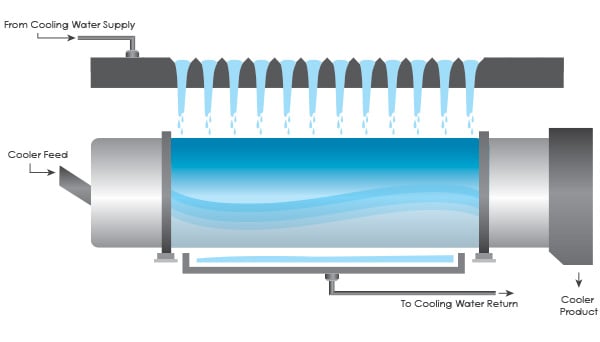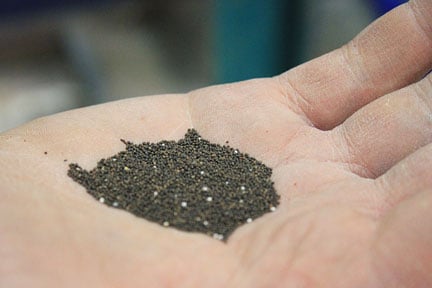Indirect rotary coolers are a special type of industrial cooler used to resolve unique cooling application challenges. Although not as commonly used as a direct rotary cooler, the use of an indirect cooler is an essential tool for cooling bulk solids in specialized applications.
How Do Indirect Coolers Work?
Indirect rotary coolers cool hot material (often those exiting a rotary kiln or dryer) through contact with the drum shell instead of a chilled air stream, facilitating a controlled processing environment.
Four major components are employed in order to indirectly cool material within this type of industrial cooler: a rotary drum, stationary housing, water trough, and water collection system.
The stationary housing encloses the rotary drum, ensuring that material is never in direct contact with the water. As the material travels down the length of the rotary drum, water is continuously deluged over the shell (for this reason, this type of cooler is often referred to as an indirect water deluge cooler).
As such, indirect coolers require a continuous or recirculated water supply in order to cool the exterior of the rotary drum. If a recycle circuit is being used, the water must be processed through a heat exchanger in order to cool it down. Once cooled, the water can be recycled back into the trough to restart the process of bathing and cooling the rotating drum.
FEECO’s industrial coolers are customized to meet the needs of each unique material. In addition to specialty design, our indirect rotary cooler drums are composed of stainless steel to prevent corrosion from exposure to water. If necessary, specialty alloys can also be utilized at the inlet to prevent particularly hot material from damaging the stainless steel drum.


Indirect Rotary Cooler Applications
Indirect coolers decrease material temperatures for a very unique set of processing needs. Most applications that utilize an indirect cooler do so because their material is lightweight and, consequently, unsuitable for direct contact with an air stream. These materials would experience significant product loss if processed in a direct rotary cooler, because the cooling air stream would inevitably carry away material. By employing an indirect water deluge cooler, producers can ensure that their lightweight material is cooled and product loss via entrainment is averted.
Applications that require a controlled environment also benefit from indirect coolers, as the indirect water deluge method prevents material from oxidizing or burning from exposure to cooling air. Typical materials that benefit from indirect rotary coolers include pigments and powdered materials.
FEECO builds robust, long-lasting, high-quality indirect rotary coolers capable of withstanding the challenges brought on by specialized applications. To learn more about designing a custom indirect cooler that meets your individual processing needs, contact us today!

